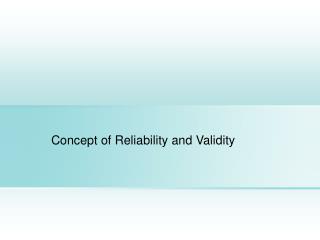

Since no test is going to be completely error-free, the correlation needs to be 0.7 or higher to be considered reliable. Researchers then measure the correlation coefficient-a statistical measure ranging on a scale from 0, no correlation, to 1, perfect correlation, to assess the reliability of the test. With this type, the same group of people is given the test twice (a few days or weeks apart) in order to spot differences in results. To confirm a test’s reliability, assessment companies determine consistency over time with test-retest reliability. To determine the reliability of their tests, assessment companies pay close attention to two aspects of reliability in particular: re-test reliability and internal consistency measures.įind out why science-based hiring assessments are more helpful at identifying candidates’ potential than resumes, referrals, and interviews here.

So, if you’re focusing on the reliability of a test, the question to ask is: are the results of the test consistent? If someone takes the test today, a week from now, and a month from now, will their results be the same? If the results are inconsistent, the test is not considered reliable. Here’s a good definition of reliability in a research context: if an assessment is reliable, the results will be very similar no matter when someone takes the test. Of the two terms, assessment reliability is the simpler concept to explain and understand. And if you’re shopping around for a hiring assessment, it’s important to understand both what both concepts mean, why they’re so important, and how they differ. It’s a common mistake to assume that reliability and validity, as they relate to pre-employment tests, are essentially the same thing.


 0 kommentar(er)
0 kommentar(er)
